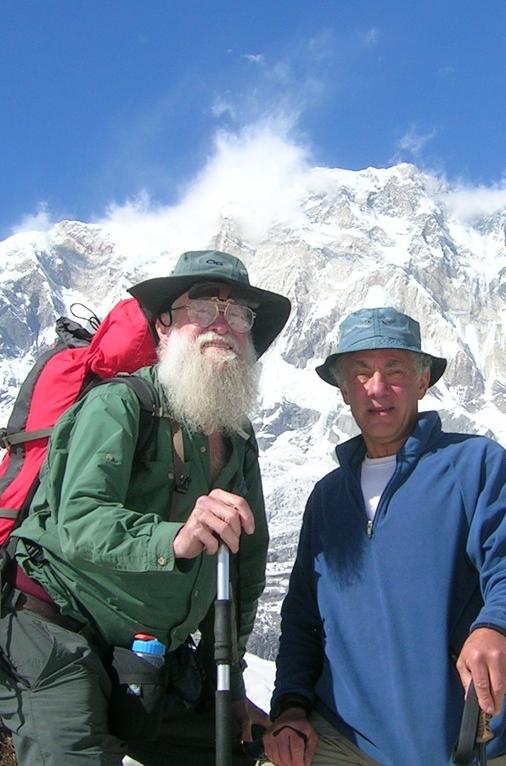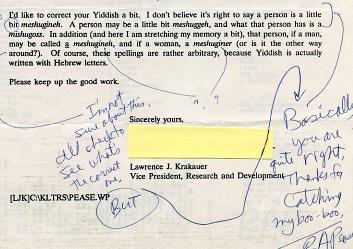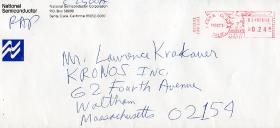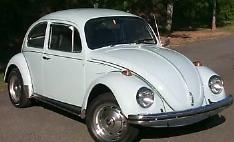
It's unusual for me to write a blog entry about someone I've never met. But in the 90s, I corresponded with Bob from time to time, and I have a file containing many of these letters. Most of the ones I still have were actual paper letters, not e-mail. Let me give a very brief profile of Bob for those readers who know nothing about him. While not known outside the electrical engineering community, Bob was probably one of the best-known analog design engineers in the world, spending most of his career at National Semiconductor. You can see a more complete biography on Texas Instruments website, entitled "Remembering Bob Pease". That site notes, "During his 33-year career at National, Bob received 21 patents and designed more than 20 integrated circuits." His obituary in the Los Angeles Times notes, "A San Francisco resident known for his brilliant mind, eccentric personality and flowing white beard, Pease worked for 33 years as an analog chip designer at National Semiconductor Corp. in nearby Santa Clara. Among his most important designs were a temperature-voltage frequency converter taken on medical research expeditions to Mt. Everest, a seismic pre-amplifier chip to gauge lunar ground tremors on NASA's Apollo missions to the moon and the LM337 negative voltage regulator. ... In addition to well-regarded scientific volumes such as Troubleshooting Analog Circuits, Pease also wrote "Pease Porridge," a regular column for Electronic Design magazine."
Bob used to do a lot of trekking in Nepal, and he designed a charger for his camcorder batteries to use on the trail. He would sit around the campfire cranking a generator (there was no other source of electricity in these remote camps). That's what made me think of Bob in the year 2000, when my younger daughter was about to set out for Nepal. What followed was an example of Bob's generosity, and is best described by a letter I wrote to Electronic Design shortly afterward, which they printed under the heading "What One Man Would Do":
(As of this writing, that letter is still posted here, on the Electronic Design web site - scroll down to the last letter.)
In one missive I sent to Bob, I speculated about why a great many drivers donít wear seat belts. I suggested that perhaps people donít like to have to be reminded, every time they get into a car, that driving is one of the most dangerous things we do regularly in our everyday lives. Rather to my surprise, Bob wrote back that he didnít think that driving was dangerous. Nevertheless, his wife reported that he DID generally wear a seatbelt, and she was surprised when it was reported that he was not belted in when his accident occurred. Note 3 In a comment in the EE Times report on Bob's death, Rajat Sewal said, "When I worked at NSC, I remember walking with Bob Pease in the parking lot, asking him why he still drove that old beetle, it was not safe, no air bag. YOU WONT BELIEVE IT! I then asked him what if he hit a tree? His reply "I don't plan to". He shut me up fast. I wish he did have a modern car, even if it was a beetle. It could have saved his life since he was not wearing a seat belt." Sewal thought that the 1969 Volkswagen didn't even have a seatbelt. But I get the impression from a few quick internet searches that front seat belts with shoulder harnesses were mandated equipment on new cars beginning in 1968. In any event, as noted in the last paragraph, Bob's car did have one, and he usually wore it. If you're interested in a flavor of the sort of correspondence I had with Bob over the years, click the next link to see his handwritten notes on the rapid recharging of electric cars, written in reply to a letter of mine. The way he scrawled notes all over a copy of my letter, with lines and arrows pointing to his own marginal comments, was his standard way of replying. In this case, he then added an additional three pages of handwritten calculations and commentary. In those pages, Bob showed that even if electric cars could be designed with a rapid-recharge capability, the amount of energy that would have to be supplied in a short time to multiple electric cars by the equivalent of a "gas station" would be prohibitive. It would require each "electric recharge station" to be fed by massive high-tension power lines, if it could be done at all (energy now arrives at gas stations in tanker trucks, and gasoline packs an enormous energy density). I think more people will be interested in seeing how Bob thought and wrote than in actually going through the technical details of his arguments, although they are interesting. His response to my letter is just one example, out of many, of his boundless enthusiasm. Also included is a scan of Bob's 1991 "List of Dead and Abandoned Cars" (seen alongside California roads), the sort of thing Bob would do. He noted on top of the list that it was the 22nd year in which he had created such a list. Bob wrote about his annual creation of these lists in an article which you can still find in the Electronic Design archives, What's All This Dead Car Stuff, Anyhow? In it, he also explains the significance of such entries on the list as "62.5 Toyota" and "3.5 Saab". Bob was one-of-a-kind, and the entire engineering community will miss him. Below is a picture of Bob on one of his many treks in Nepal (taken ca. 2005). He's shown with Victor Scheinman (MIT '63), who sent me the photograph. It's not the greatest picture of Vic, who's squinting in the sun, but I thought it was a good picture of Bob and the mountains of Nepal that Bob so loved.    Note 1: Perhaps you're wondering about the title of the Electronic Design magazine supplement I pictured, "What's all this stuff, anyhow?". In his long-running Electronic Design column "Pease Porridge", Bob's articles almost always had titles such as "What's All This Neatness Stuff, Anyhow?", or "What's All This Dead Car Stuff, Anyhow?". On the Texas Instruments web site, you can read some of his columns, in a humongous PDF file called "The Best of Bob Pease". [return to text] Note 2: I did indeed get the Yiddish words for "a crazy person" backwards in my letter. It's a "meshugener" for a man and a "meshugeneh" for a woman. "Meshugeneh" is also an adjective, which accounts for Bob's comment that "If I had just left out that word ["bit"], I'd have got away with it." When I scanned the letter, I covered my signature, so as not to make it publically available on the Internet. [return to text] Note 3: I wasn't trying to say that driving is extremely dangerous. I just meant exactly what I said, that it's one of the most dangerous things we do in our everyday lives. This is partly because we do so much of it. While your chance of getting into a serious accident is pretty low on any single drive, we can easily drive four or more times a day, adding up to more than 85,000 trips in a car in a sixty-year driving career. How many people can say they've never been in an automobile accident? How many have never personally known someone who was seriously injured or died in an automobile accident? That gives you some idea of the cumulative risk of driving over a lifetime. [return to text]  |



 It was said that Bob loved driving his old Volkswagen "beetle" (the one shown to the right is not Bob's, but just an example of that model year). Most engineers I know are very safety conscious, and I was surprised when I first heard about Bob's car. The "beetle" is a rather light-weight car, and it didn't strike me as the safest thing to drive on California roads (and the 1969 model had fewer safety features than a modern car). Yet Bob loved it, and he maintained it himself.
It was said that Bob loved driving his old Volkswagen "beetle" (the one shown to the right is not Bob's, but just an example of that model year). Most engineers I know are very safety conscious, and I was surprised when I first heard about Bob's car. The "beetle" is a rather light-weight car, and it didn't strike me as the safest thing to drive on California roads (and the 1969 model had fewer safety features than a modern car). Yet Bob loved it, and he maintained it himself.